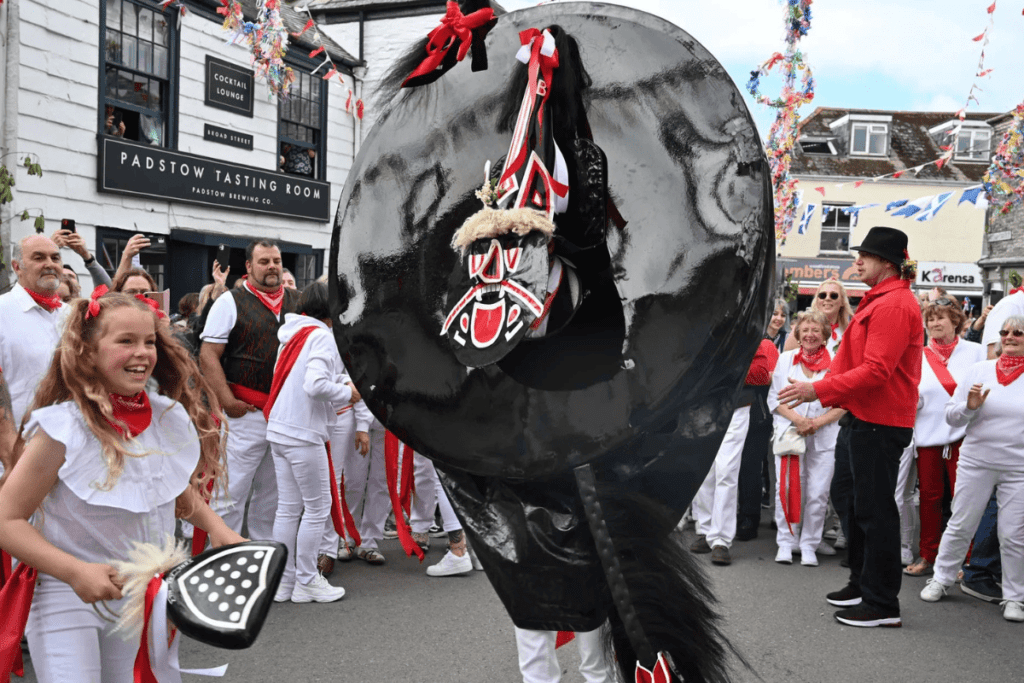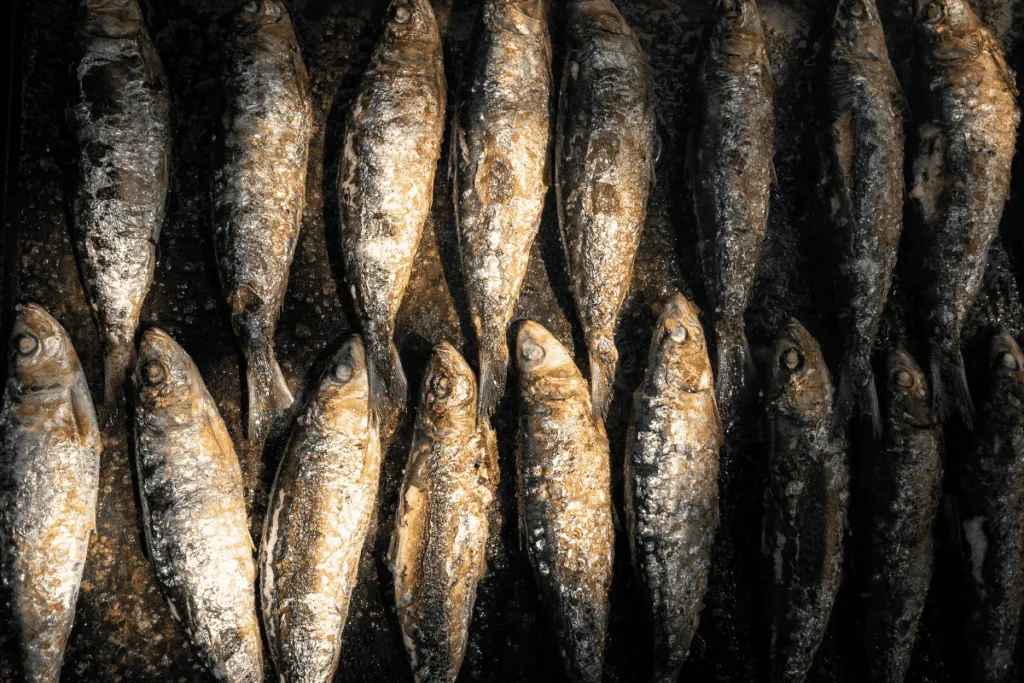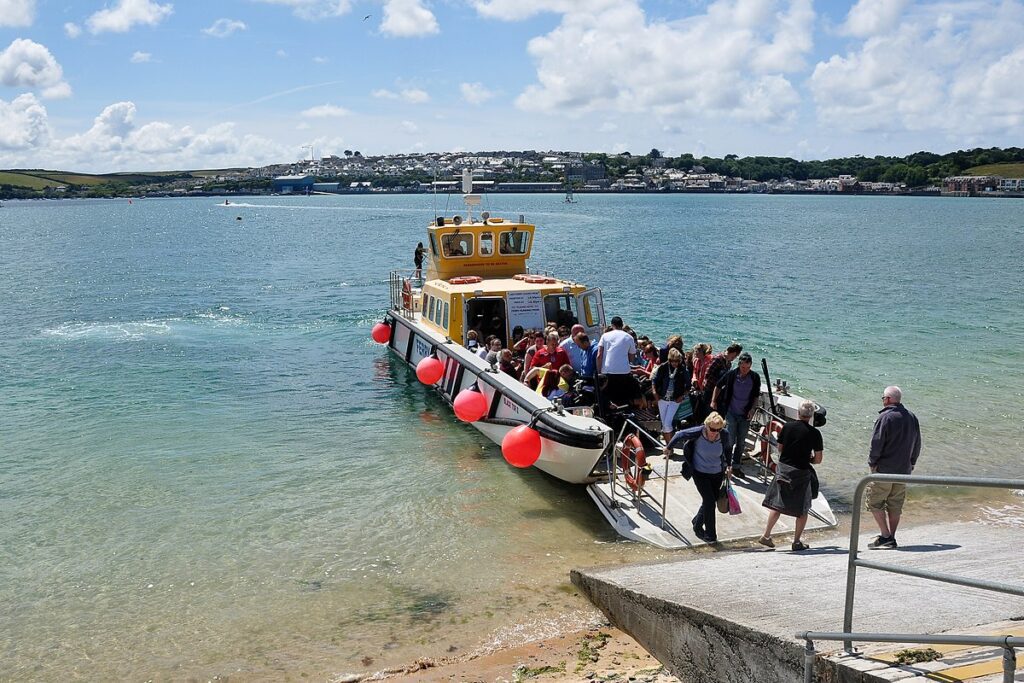The Early Origins of Padstow
Disclaimer: This content is true to the best of our local Padstow knowledge, but if there’s anything that we’ve missed or if there’s something that we might have misrepresented, please feel free to contact us. We’d love to hear Padstow stories from our locals.
Nestled along Cornwall’s north coast, the harbour town of Padstow has been shaped by its deep connection to the sea for centuries. From its humble beginnings as a medieval fishing port to becoming one of Cornwall’s most beloved coastal destinations, the history of Padstow is richly interesting, with evidence of settlement going back thousands of years.
Here at Padstow Sealife Safaris, we’re passionate about sharing the rich maritime heritage that makes our home so special. As you explore Padstow’s winding streets and bustling quayside with us, you’ll discover tales of brave fishermen, daring smugglers, and the natural wonders that continue to thrive in our coastal waters.
Celtic Roots and St. Petroc’s Influence
By the early medieval period, Padstow had emerged as an established settlement, though it remained relatively small compared to other towns in Cornwall. When the Romans left Britain in the 5th and 6th centuries, as the Romans withdrew from Britain, the region saw a resurgence of Celtic influence, as Cornish tribes reasserted control over the area.
In the 7th century, Padstow became closely linked to Saint Petroc, a Welsh Christian missionary who is believed to have founded a monastic settlement in the area. St. Petroc’s influence helped establish the town as a centre of Christianity in Cornwall. That’s why you’ll sometimes hear locals call our town the “town of St. Petroc” – and if you visit St. Petroc’s Church while you’re here, you’ll be standing on ground that’s been sacred for over a thousand years.
Medieval Padstow and the Prideaux Family
By the medieval period, Padstow had grown into a bustling port town. The town’s harbour, protected by the natural landscape, made it a prime location for maritime trade, particularly for the export of tin, copper, and fish, which were important commodities in medieval Cornwall.
The Prideaux family can trace its origins back to the Norman Conquest of 1066. The family’s early history in Cornwall is intertwined with the county’s medieval aristocracy. The Prideaux family was granted land and estates in Cornwall after the conquest, becoming an influential part of the local gentry. They were early benefactors of Padstow, where they established their presence and held manorial rights over local lands.
The Prideaux family has left an indelible mark on Padstow’s history that still resonates today. In 1592, they built the magnificent Prideaux Place, an Elizabethan manor house that continues to overlook the town. For over 400 years and through 14 generations, the Prideaux family has resided in this stunning estate. Their patronage supported local industries and community initiatives, while their home became an important part of the area’s heritage. Today, Prideaux Place remains one of Padstow’s most treasured landmarks, offering visitors a glimpse into the family’s remarkable legacy and the town’s rich history.

Padstow’s Maritime Heritage
The Rise of the Fishing Industry
Our town’s love affair with fishing goes way back -possibly even to prehistoric times. It’s easy to see why our ancestors chose this spot: our perfect position on the Camel Estuary gave boats sheltered waters and quick access to the open sea. Long before Padstow became the charming harbour town you see today, locals were already taking to the waters in simple vessels, bringing home fish to feed their families.
By medieval times, our little fishing village was really starting to make waves! The harbour became home to fishing fleets that would brave the Atlantic in search of cod, herring, and mackerel. These hardworking fishermen not only kept local tables supplied with fresh seafood but also helped put Padstow on the map as an important port town.
Shipbuilding and Trade
By the medieval period, Padstow had become an important coastal port, and shipbuilding began to play a significant role in Padstow’s economy. As a bustling harbour for trade and fishing, Padstow required a variety of vessels, from smaller fishing boats to larger trading ships.
The fishing industry was the driving force behind Padstow’s early maritime activity. Local shipbuilders crafted smaller fishing boats, such as cobles and drifters, designed for use in the Cornish seas. These boats were essential for the fishing fleets that brought in cod, mackerel and other coastal species.
As Padstow developed as a trading hub, larger vessels, including cogs and brigs, were built to engage in trade with other Cornish towns and further afield. The port of Padstow handled exports of tin, fish, salt, and agricultural products, which were traded throughout Britain and abroad, especially to northern Europe.
The Impact of the Railway
The Padstow Railway was part of the larger Bodmin and Wadebridge Railway, which opened in 1834. It initially connected Bodmin with Wadebridge, and in 1899, the line was extended to Padstow, linking the town to the larger national rail network. The completion of this extension brought the railway directly to Padstow, a significant development for the area.
Before the railway, Padstow was a relatively isolated town, accessible mainly by sea or by difficult and winding roads. The railway provided a direct link between Padstow and other major towns in Cornwall and beyond, making the town more accessible to visitors and trade.
The most significant economic impact of the railway was the increase in tourism. With the introduction of the train, visitors from across the UK could travel to the town more easily. The town became increasingly popular as a seaside resort, particularly for those looking for a picturesque destination in Cornwall.

Local Legends and Folklore
The Legend of St. Petroc and the Dragon
According to local legend, when Christian missionary St. Petroc came to Cornwall, he encountered a fearsome dragon that had been terrorising the local population. The dragon was said to be so large and menacing that no one dared to confront it, as the dragon had been eating livestock and threatening people’s lives.
With remarkable courage (and a hefty dose of divine help), St. Petroc managed to defeat the dragon – a victory locals believe came through God’s guidance and protection. This historic tale has become a treasured piece of Cornish folklore that we still share today.
St. Petroc remains one of Cornwall’s most beloved saints, and each year, on June 4th, his feast day is celebrated with special events throughout Cornwall. It’s just another fascinating thread in the rich history of Padstow.
The Doom Bar and its Mythical Origins
The Doom Bar is a famous sandbank in the Camel Estuary, and has a rich mythological and historical reputation. Its original name was the “Dunbar” or “Dune Bar” but it was renamed after becoming a source of doom and dread amongst sailors, causing 600 strandings over the course of 200 years.
Legend has it that a mermaid fell in love with a local fisherman, but the feelings were not reciprocated. She tried to lure him beneath the waves to be with her, but to escape, he shot her. To get her revenge, her final act was to curse the river with the “Doom Bar”.
As sail-powered ships entered the estuary around Stepper Point, the lay of the land would knock the wind out of the ships’ sails, and they would drift away from the deeper water channel and into the “Doom Bar”.
Ghost Stories of Prideaux Place
One of the most well-known ghost stories at Prideaux Place revolves around the apparition of the Grey Lady. The ghost is said to be the spirit of a lady who once lived at the house. The story goes that she was either a lady-in-waiting to one of the owners or the wife of a past Lord of the estate who met a tragic fate.
The Grey Lady is often seen drifting through the corridors or appearing in the windows of the house, dressed in an elegant grey gown. Some accounts suggest she appears most often in the dining room and upstairs bedrooms, where she is said to occasionally make her presence felt by an inexplicable chill in the air or a feeling of melancholy.

The History of Padstow’s May Day Celebrations
Nothing captures the spirit of Padstow quite like our famous May Day celebrations! Every year on May 1st, our streets come alive with music, colour, and joyful energy as locals and visitors gather for one of Cornwall’s most beloved traditions. The air fills with the rhythmic beating of drums, cheerful singing, and the sounds of merriment as people of all ages dance through the town’s narrow streets. This beloved annual celebration has a timeless quality that connects today’s revellers with countless generations before them.
Origins of the ‘Obby ‘Oss Festival
The name Obby ‘Oss is derived from the Cornish word obby (meaning “hobby” or “hobby-horse”) and the local dialect word oss (meaning “horse”).
The festival features a large “hobby horse” that is paraded through the streets of Padstow, and the main event is the procession of two “obby osses” (one red and one blue), each accompanied by groups of dancers, musicians, and revellers. The festival is steeped in ancient traditions, and scholars believe it has roots in pre-Christian fertility and harvest rituals.
Locals don white clothes with colourful accessories while following their chosen ‘Oss in a day-long procession. Some believe the ‘Osses bring good luck, while fishermen once considered them vital for ensuring bountiful catches.

Evolution of May Day Traditions
Today, the Obby ‘Oss festival has become a vibrant and much-anticipated event that draws large crowds to Padstow. Padstownians come from all over to return home for this most important date in their annual calendar.
Despite its modern popularity, the festival still retains many traditional elements, including the ancient songs, dances, and processions. The local community continues to play a key role in maintaining the traditions, with local families often taking part in the festivities that are passed down from generation to generation.
The Blue and Old ‘Oss Rivalry
The rivalry between the Blue Oss and the Old Oss is one of the most iconic aspects of the Obby ‘Oss Festival. The rivalry is not just a playful contest; it has deeper symbolic meanings tied to local traditions.
The Old Oss is considered the primary obby ‘oss. It is traditionally associated with the older, more established parts of Padstow. The Old Oss is typically dressed in red or black, and its costume is often the most elaborate. The figure is led by the Old Oss’s Keeper, a person who has responsibility for its movements and ceremonies during the festival.
The Blue Oss, as the name suggests, is typically adorned in blue and is somewhat less prominent. The Blue Oss usually has a different group of followers, and its supporters might view it as a symbol of a more modern or alternative tradition compared to the Old Oss. This difference in followers adds to the rivalry.
The History of the Padstow Fishing Industry
Traditional Fishing Methods
Traditional fishing methods in Padstow have played a crucial role in the town’s history, economy, and culture. From handlining and trammel nets to crab potting and pilchard fishing, the fishing heritage of Padstow is rich and diverse. While modern fishing methods have replaced many of these traditional practices, the spirit of Padstow’s maritime past continues to influence the town’s identity, particularly through its sustainable seafood industry.
The Pilchard Boom and Decline
At its peak, pilchard fishing was a crucial part of Padstow’s economy. The pilchard fishery provided work for numerous fishermen, boat builders, net makers, and salt merchants. The production of salted pilchards supported local industries, including the development of pilchard factories where the fish were processed and preserved. Padstow became one of the key locations for these industries, and the wealth generated by the fishery helped the town flourish.

Modern Fishing Practices and Sustainability
Modern fishing practices in Padstow reflect a growing commitment to sustainability, ensuring that the town’s rich maritime heritage can continue in a way that respects the environment and preserves fish stocks for future generations.
Through sustainable fishing methods like potting, handlining, and regulated netting, combined with initiatives like marine conservation zones and eco-friendly fishing gear, Padstow’s fishing community is balancing tradition with environmental responsibility.
The Rise of Tourism
From Working Port to Holiday Destination
Padstow’s rise as a popular tourist destination is a product of its natural beauty, historical significance, accessibility, and culinary excellence. Over the years, it has evolved from a quaint fishing village to a vibrant, year-round destination, attracting visitors from all over the world.
You can take a sneak peek at views of Padstow Harbour and Rock Estuary via our live webcams.
The Influence of Rick Stein and Culinary Tourism
Rick Stein’s influence on Padstow has been nothing short of transformative. His commitment to high-quality, locally sourced seafood, combined with his media presence and expansion of culinary ventures, has made Padstow a hotspot for food tourism.
His work has not only helped put Padstow on the map as a gastronomic destination but has also fostered a greater appreciation for the Cornish food culture. The town’s culinary tourism industry continues to thrive, drawing visitors from around the world who are eager to experience the unique flavours of Cornwall!
Preserving Padstow’s Heritage
Conservation Efforts and Historic Sites
Padstow’s combination of conservation efforts and historic sites makes it a fascinating destination for both nature lovers and history enthusiasts.
The town’s commitment to protecting its marine environment, wildlife, and landscapes, alongside its efforts to preserve and share its rich cultural heritage, ensures that Padstow remains a vibrant, sustainable community with a deep respect for its past. Whether exploring the historic Prideaux Place, walking the Camel Trail, or learning about the town’s maritime heritage at the Padstow Museum, there is so much to discover in this beautiful part of Cornwall.
When you join us for a boat trip adventure, you’re connecting with centuries of history and a community that cherishes both its past and its stunning natural setting.
Frequently Asked Questions About The History of Padstow
What is Padstow known for?
Padstow is known for its beautiful harbour, fishing heritage, and scenic estuary views. It is also famous for its seafood, and for being the home of renowned chef Rick Stein, who has contributed to the town’s culinary fame. The town is a popular tourist destination for its historic charm, beaches, and outdoor activities, including cycling on the Camel Trail.
What is the best time to visit Padstow?
The best time of year to visit Padstow depends on your preferences. For instance, spring and summer are ideal for warm weather, festivals and enjoying outdoor activities, but it is busy! Autumn is quieter and offers beautiful coastal walks with fewer tourists. Winter is quieter again, but can be cold, though it’s perfect for peaceful coastal walks and experiencing a more tranquil Padstow.
How do I get to Padstow?
Padstow is located in north Cornwall, and while it doesn’t have its own train station, you can reach it by car or bus. There are regular bus services from Wadebridge and Newquay to Padstow. The nearest train station is Bodmin Parkway, from where you can catch a bus to Padstow.
What attractions are in Padstow?
Padstow has a range of attractions for visitors, including Padstow Harbour, Padstow Museum, The National Lobster Hatchery, Padstow Sealife Safaris, the Camel Trail and beaches.
Are there any events or festivals in Padstow?
Padstow hosts a variety of events throughout the year including Obby Oss Festival (May Day) and Padstow Seafood Festival.


